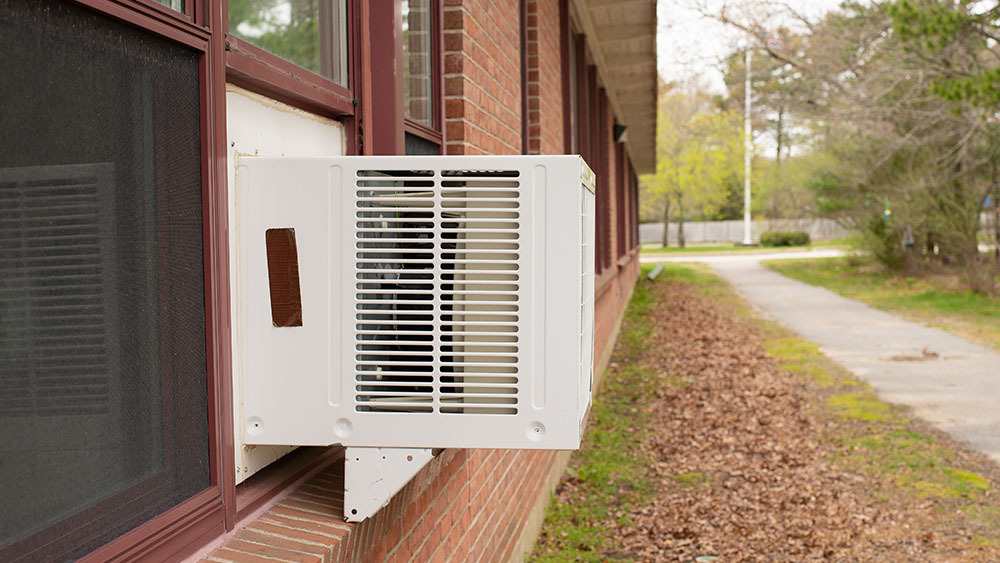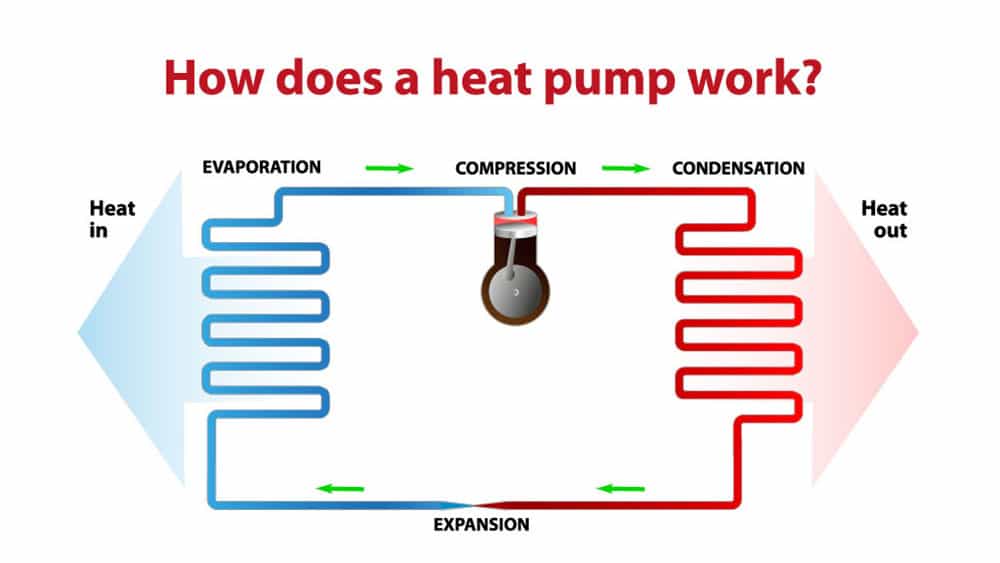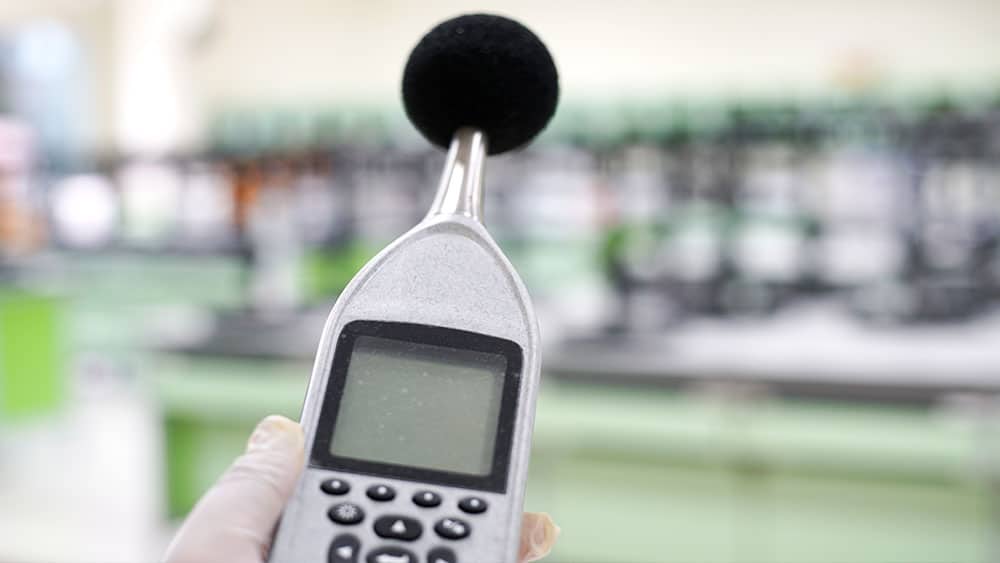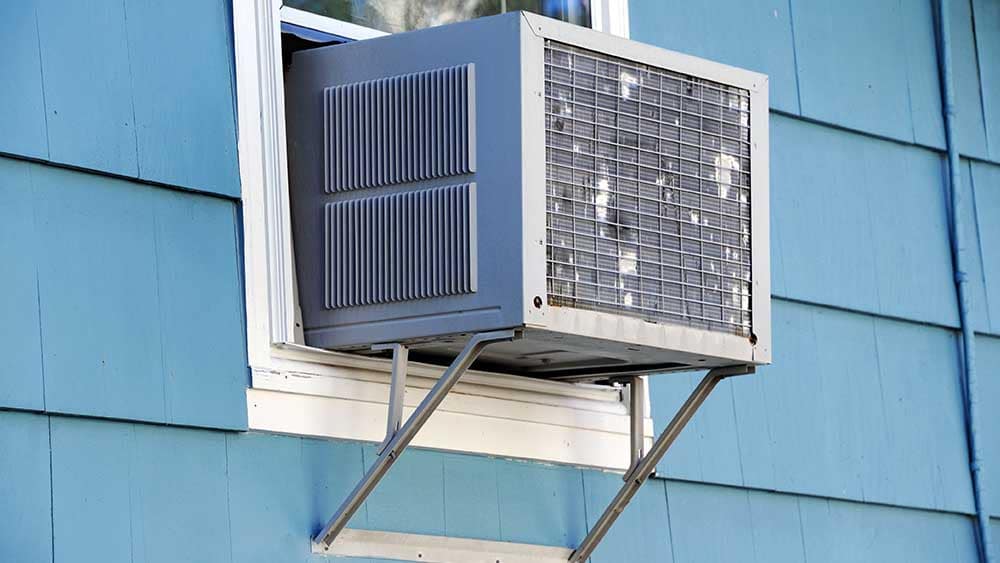
Key Takeaways
- Window heat pumps are efficient units that provide both heating and cooling.
- They can easily be installed in most windows without the need for extensive modifications.
- Window heat pumps are ideal for small to medium-sized spaces.
Window heat pumps have become a key player in creating comfortable indoor environments. From compact units designed for small spaces to more robust systems for larger areas, these versatile devices offer a solution for various heating and cooling needs. Factors such as budget, room size, and location play a crucial role in choosing the right type of heat pump.
Let’s explore how window heat pumps work and look at some of the common queries regarding window AC with heat pumps.
- What Is a Window Heat Pump?
- How Do Window Heat Pumps Work?
- Window Heat Pump Maintenance
- Energy-Efficiency of Window Heat Pumps
- Make Your Window Heat Pump Smart
- How Much Noise Do Window Heat Pumps Make?
- How Much Do Window Heat Pumps Cost?
- Advantages and Disadvantages of Window Heat Pumps
- What Features to Look for in a Window Heat Pump?
- 5 Best Window Air Conditioners with Heat Pumps
- Why Opt for a Window Heat Pump?
What Is a Window Heat Pump?

A window AC heat pump is a versatile appliance that provides both cooling and heating, eliminating the need for seasonal removal.
In comparison with space heaters, window heat pump units are much more efficient when heating during winter. They focus on warming an entire room rather than a limited space and are able to do this at a much lower cost. They may appear heavy-duty and much larger than space heaters, but the amount of energy they consume is a lot less!
They mostly suit small spaces, and you can easily install them in both new and older homes. All you need is a window to install your window-mounted heat pump. If you don’t have a window, an opening in the wall can be used, but for that, you would require a through-the-wall air conditioner. It is similar to a window heat pump but is designed to sit inside the wall instead of a window.
The size of your window heater determines the size of the opening required. The cost of installing and operating these units is much lower than a ducted HVAC system, which works for an entire house.
Related: Ducted vs. Ductless Air Conditioning Systems
How Do Window Heat Pumps Work?

A window unit with heat works like any other heat pump but in a more compact form. In the summer months, a heat pump provides cool air into your room and ejects the heat outside. In winter, the process is reversed, allowing you to experience a comfortable room temperature all year long.
Operation in Cool Mode
The functioning of window units with heat pumps involves taking heat from the air outside your house and moving it indoors. Since it involves the exchange of hot or cold air, it is more efficient than other methods that generate heat using electricity, such as space heaters.
The air is cooled using a chemical known as a refrigerant within your air conditioner. The refrigerant is moved within a network of coils. It is continuously cycled through the evaporator, condenser, compressor, and expansion valve and is responsible for your cooling or heating.
When passing through the expansion valve, the refrigerant, which was previously a liquid, turns into a gas. After this process, the refrigerant is cooled and passes through evaporator coils. A fan blows air over these coils, cooling the air down and introducing it into your room.
After this, the refrigerant absorbs the heat from indoors and is a warm gas by now. It is then passed through the compressor. The refrigerant is now a high-pressure, high-temperature gas. A fan in the condenser blows over the coils carrying this high-temperature gas and cools it down. The whole cycle then repeats itself to keep on cooling your room.
Operations in Heat Mode
Window heat pumps utilize advanced technologies to efficiently provide both cooling and heating functions within a confined space. To use the heating function, this cycle is simply reversed through a reversing valve, and warm air is then introduced into the room. Heat is extracted from the air outside your house and introduced inside your room.
These units typically incorporate a double-shaft fan motor, enhancing the air circulation process and ensuring the outdoor fan and the indoor fan operate at the same speed at all times.
Additionally, many window heat pumps feature a 4-way valve in their refrigeration system. This valve plays a crucial role in reversing the refrigerant flow during the transition between cooling and heating modes. The 4-way valve redirects the suction and discharge gas to its proper flow. There is always a possibility of the outdoor coil being frozen when temperatures plummet. This is tackled by the unit going into defrost mode to clear the ice using cool mode.
Operations for Ventilation
If you do not want cooling or heating but only ventilation, you could turn your heat pump into fan mode. In this mode, your window-mounted heat pump blows un-conditioned air into your room. This is especially useful in winter when your space gets a bit stuffy.
Window Heat Pump Maintenance
Like any other HVAC system, window units require regular cleaning for optimal performance. It’s best to clean the air filters once a week and replace them every three weeks, as the window heater is used all year round.
Here’s a basic guide on cleaning the filters:
- Turn off your unit from the breaker.
- Remove the front panel of the unit.
- Locate the air filter inside the unit and take it out. You will need to refer to your manual to find it.
- Take the filter to a wash basin and use a mild soap and water solution to clean it. You can use a soft brush or a sponge to remove the debris.
- Then rinse it thoroughly.
- Allow it to dry before putting it back inside the unit.
Related: Window AC Repair Guide: Tackle Common Problems Like a Pro
Energy-Efficiency of Window Heat Pumps

Window heat pumps are some of the most efficient appliances around. This is because the wastage from their heating or cooling is minimal. They can be used to individually control the climate of small compact room spaces individually, as opposed to ducted heat pumps.
Cooling Efficiency
The efficiency of the window unit is measured in Energy Efficiency Ratio (EER) for its cooling functionality. The higher the EER, the more efficient an air conditioner is. EER is calculated by taking an outdoor temperature of 95F and dividing it by the current power of the appliance in watts. The average EER rating for a window unit is between 8.5 and 10.
Another way to measure cooling efficiency is by the CEER rating method. It measures the combined efficiency of a window unit when cooling and when in standby mode. Most window unit heat pumps have a CEER between 9.8 and 15.
Heating Efficiency
Heating efficiency for window unit heat pump is measured using a Heating Seasonal Performance Factor (HSPF). An HSPF of 9 or higher is considered efficient, and heat pumps with this HSPF are an excellent option to go for.
Moreover, keep an eye out for ENERGY STAR certified window heating and cooling units. They are accredited by the United States Environmental Protection Agency as energy efficient and use 10% less energy than comparable models.
Make Your Window Heat Pump Smart
You can also opt for smart heating for enhanced efficiency. You can make a conventional window air conditioner smart using window AC thermostats such as Cielo Breez. These devices can equip any window unit with features such as global control using your phone, geofencing, Comfy Mode, scheduling, and more. Utilizing smart features, you can keep track of your window heat pump’s usage and allow automation to provide the most efficient heating or cooling. Moreover, you can connect your window air conditioner with your smart home hub for effortless climate control in your home.
Related: How to DIY a Smart Window Heat Pump!
How Much Noise Do Window Heat Pumps Make?

Window unit heat pumps are one of the quietest air conditioning appliances around. Most heat pump window units operate between 50-60 dB, ensuring you get a good night’s sleep in complete silence.
The noise level is further minimized in ENERGY STAR certified units. These heat pumps use advanced materials, better technology, and superior noise-cancellation technology.
Ball-bearing motors are a comparatively new technology that allows for much more silent operation. If you’re looking for low noise and a quick start, opt for a window heat pump unit with a ball-bearing motor.
Related: How to Reduce Air Conditioner Sound for Peace and Quiet
How Much Do Window Heat Pumps Cost?

Prices for introductory or basic models of heat pump window units start from around $500. Depending on the size and functionality, the cost can go up to $800. High SEER and functions such as Wi-Fi compatibility or modern designs can increase the price.
Advantages and Disadvantages of Window Heat Pumps

Let us briefly go over some of the pros and cons of window heat pumps:
| Advantages | Disadvantages |
| Cheaper than other ductless heat pumps, such as mini-split heat pumps. | In regions of extremely low temperatures, a window heat pump usually is not suitable for heating the room sufficiently. |
| Small and simple to install. You do not need to drill any holes in the wall, with the unit simply popping into your window. | Mini-split heat pumps are more energy-efficient than window heat pumps. |
| Efficient operation results in lower utility bills. | Not adequate to cool more than one room. |
| Dehumidify and filter out indoor air | They block the view from the window. |
| Can be made smart by paring them with mini-split thermostats. | You will have to put an extra effort in hiding your window unit. |
What Features to Look for in a Window Heat Pump?
Before you set out to buy a window heat pump unit, it is essential to know what features to look out for.
1. Heat Pump Size
Opting for a unit that’s too small may result in inadequate cooling or heating, requiring the window unit to work excessively to meet temperature needs, thereby straining your energy bills. Conversely, selecting a heat pump that’s too large for the room can lead to unnecessary energy consumption and leave a considerable impact on your electricity costs.
British Thermal Unit, or BTU, is the unit used to measure the heating/cooling capacity of a window heat pump. As a general rule, 20 BTU is required for each square foot of living space. The cooling output of window units ranges from 8,000 BTUs to 25,000 BTUs. Heating capacities range from 3,500 BTUs to 16,000 BTUs.
Here is all you need to know about air conditioner sizing.
2. Wi-Fi Compatibility
You can connect most window heat pumps to Wi-Fi, allowing for global controls from anywhere in the world. It does not matter if you are in another room or simply halfway around the world; you have total control over your window unit via your smartphone app . You can perform all functions, such as changing the temperature, fan mode, operating mode, and much more, through the smartphone app.
Furthermore, if your window-mounted heat pump lacks built-in Wi-Fi compatibility, there’s an alternative solution. You can enhance its capabilities by utilizing mini-split thermostats, transforming your heat pump into a smart device. These controllers offer advanced features surpassing those of built-in Wi-Fi-compatible heat pumps, including week-long schedules, temperature and humidity triggers, geofencing, and usage tracking.
3. Types of Air Filter
There are different types of air filters that you can use in a heat pump. For easy maintenance and low upkeep costs, it’s best to opt for a window heat pump that supports washable air filters. If you have allergies, you should look into the HEPA filter heat pump. These filters can block out 99.97% of particulates 0.3 microns or larger.
4. Sleep & Timer Function
The convenience of having your heat pump automatically switched on or off is a valuable feature. Numerous heat pumps are equipped with a built-in timer that allows you to customize its operation based on your preferences. For instance, you can set the timer to turn off the heat pump after 60 minutes, providing a hassle-free and hands-free solution to meet your comfort needs
If your window heat pump comes with an IR remote control, you can also use a mini-split thermostats to schedule exactly when your heat pump should turn on or off.
Furthermore, the sleep function in window heat pumps is designed to optimize nighttime comfort and energy efficiency. This feature typically adjusts the temperature settings gradually over a specified period, preventing abrupt temperature changes that can disrupt sleep. It automatically adjusts the set temperature to increase or decrease after a specified period of operation.
5. Safety Certification
When selecting a window heat pump, it is crucial to prioritize safety features and certifications to ensure optimal performance and user well-being. Look for products that adhere to recognized safety standards and certifications, which signifies that the device has undergone rigorous testing, for example, for electrical and fire safety. Additionally, seek out models with built-in safety features like overheat protection and automatic shut-off capabilities to prevent potential hazards.
6. Auto Restart
When considering a window heat pump, an essential feature to look for is auto-restart capability. This functionality ensures that the unit automatically resumes operation with its previous settings after a power outage. Auto-restart is particularly valuable as it helps maintain a consistent and comfortable indoor climate, even in the face of unexpected interruptions. This feature is especially beneficial for those living in areas prone to power outages.
5 Best Window Air Conditioners with Heat Pumps
If you’ve decided to buy a window air conditioner, then it’d be best to go with the system that offers the heating option for year-round usage.
There are multiple manufacturers of heat pump window unit . These include Frigidaire, Kenmore, Friedrich, Comfort Aire, LG, GE, American Comfort, Amana, Carrier, and many other HVAC manufacturers.
There isn’t a one-size-fits-all solution when it comes to window heat pumps. It’s essential to evaluate available sizes, efficiency levels, and any additional features included in the offered price. Ultimately, a thorough review of customer feedback can guide you in making the best choice for your specific room requirements.
To help you out, we’ve compiled a list of five window heat pumps that you can choose from:
1. LG LW8016HR 12000 Window-Mounted Air Conditioner with Heat
This LG unit is considered one of the best window air conditioners with heat by many homeowners, as evident by its selection in Amazon choice products.
It provides a 3,850 BTU supplemental heat function with a high 13 SEER. It offers low noise performance and two fan speeds to customize as per your needs. In addition, the unit has an auto-restart function that automatically turns it back on when power is restored after a power failure.
2. FRIGIDAIRE FFRE0833S1 Window Air Conditioner with Heat Pump
https://www.pinterest.com/pin/1101059808903365520/
Frigidaire 8,000 BTU window-mounted air conditioner with supplemental heat comes with multi-speed electronic controls. To put its performance into perspective, it can dehumidify up to 1.5 pints per hour for a room up to 350 sq. ft. You will get a window mounting kit to make the installation easier. In addition, it has washable air filters, so you can easily clean and reuse them when needed.
3. Koldfront WAC18001W Heat/Cool Window Air Conditioner
Koldfront WAC18001W 18,500 BTU 208/230V window heat pump is for rooms up to 700- 1,000 sq. ft. The packaging also includes the installation hardware and weather seals, so you won’t have to worry about buying those separately. Just remember that this unit requires a 30 Amp 230 Volt breaker to function properly.
4. Koldfront WAC12001W Heat/Cool Window Air Conditioner
This window AC heat pump by Koldfront has four operating modes and three fan speeds. Thanks to its digital display, you can effortlessly set your desired temperature and control other features like the energy saver mode, fan speed, and 24-hour timer. It also offers a sleep mode to help save energy.
5. PerfectAire 3PACH18000 Window Air Conditioner With Heat
The PerfectAire unit is an excellent choice for those looking for a powerful, window-mounted heat pump. This unit boasts a cooling output of 18,500 BTU. Additionally, it has a 4,800W power input, which allows it to generate 16,000 BTU of heating output when used as a standalone heater. With an EER rating of 10.7, this dual-purpose device is one of the most energy-efficient combos on the market.
Why Opt for a Window Heat Pump?

In conclusion, window heat pumps emerge as a versatile and practical solution for personalized climate control. Their compact, efficient, and dual-functional design makes them a great choice for room heating and cooling. The convenience of not requiring structural modifications, except for through-the-wall installations, adds to their appeal. If you’re seeking a straightforward and efficient way to cool or heat a single room without the complexity of ducts, heat pump window units prove to be an ideal choice for enhancing comfort in your apartment or room.









11 Comments. Leave new
Are any of these cold climate rated and able fit into a 23″ wide single hung window
Why does the Frigidare unit performance include 7000 BTU heat AND 3500 BTU “electric heat”? From the owners manual, I see no way of selecting one or the other. I need 7000 BTU. 3500 BTU is insufficient, based on my use of a fan/heater that barely keeps the room warm with 5200 BTU.
This unit can provide 3500 BTU supplemental heat. 7500 BTU is its cooling power.
How do you tell if its a Heat Pump or just an electric heater?
Heat pumps are designed for both heating and cooling while electric heaters can only warm up an area.
Most split system heat pumps work pretty efficiently down to 17 F after which their efficiency drops pretty quickly (other than the special low temperature units like LG Red or Mitsubishi Hyperheat H2i). Do these window units really stop performing at 32F ? Are there any charts or specs you can point us to?
Hi, can you tell me how cold is too cold for a window heater(with heat pump) to work pro?(blowing hot air, not slightly warm air? And could you wrap the outside of the unit when using the heat mode?
Hi Donna, window heat pumps are highly efficient units but when the temperature goes down below freezing (32 F or lower), the effectiveness of your heat pump reduces.
As heat pumps extract heat from the outside air and deliver it indoors during winter season, wrapping the outdoor part will hinder its functionality.
It is important for us to ensure that when we need to have heat pump installation, it is first to have the right air filter in placed. My wife and I are planning to have our home furnaced with new heat pumps. I will keep this information in mind and ensure the contractor we hire is experienced.
Is there one for casement windows. I can’t have one that’s more than 12 inches wide and have it fit.
Yes, you can get a window heat pump specially designed for casement windows.